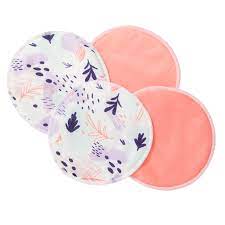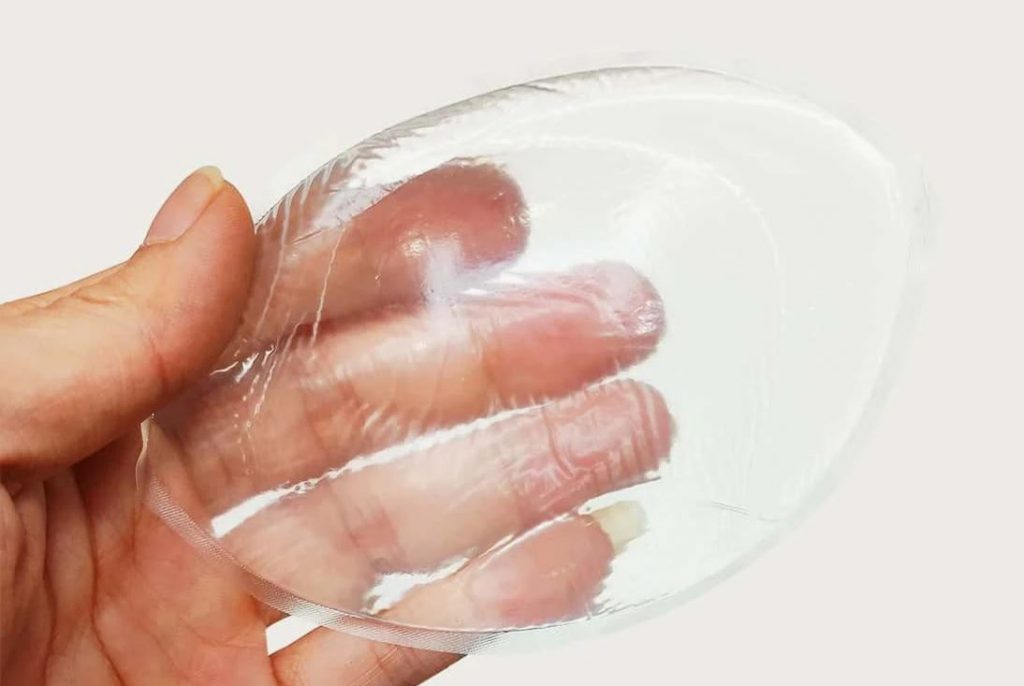Nursing breast pads
Being a new mother is already a daunting task. You have this tiny new human to take care of; feeding, changing nappies, bathing, clothing, comforting, and so much more. On top of all that you are probably still recovering from the birth, whether it was a natural birth or a caesarean. There is also the danger of post-partum depression, worries about bonding with your baby, fear of what the future holds for them, and hoping you can provide for them in the best possible way. Then there is the breasts. Whether or not you choose to breastfeed, your breasts are going to be producing milk, and it is also going to leak milk. The last thing that you want to be worrying about are annoying wet spots on your clothes. Most women find this embarrassing, especially if this happens in the workplace. Therefore many women turn to nursing breast pads to catch the naughty milk that is escaping. This too can be a daunting task, as there are so many options to choose from. So let us explore those options in more detail.
What are breast pads?
A breast pad, or nursing pad, is simply either a cloth or disposable pad worn over the breast against the nipple to absorb milk that leaks between feedings or when a woman is going through the process of halting the production of milk. The breast pad is worn inside the bra over the breast. You can purchase disposable or reusable pads, or even make them yourself. The pad needs to be changed when it is wet in order to keep the nipple dry and clean. There are a couple of main types of breast pads, and they all come in different shapes and sizes. Many have an adhesive to keep the pad in place.
Disposable breast pads

While the word ‘disposable’ immediately conjures up visions of massive landfills, this is certainly not always the case. Especially in recent years, companies have strived to make disposable breast pads that are both easy to use and is also eco-friendly. The nice thing about disposable breast pads are the comfort of use, but on the flip side of the coin it can become expensive in the long run. This is especially true if you opt for the more expensive breast pads in order to think green. Some of the eco-friendly disposable breast pads that are available are the organic cotton pads, and the bamboo pads. Both are soft on the breast and nipple, are hypoallergenic, and contains no bleaches or other harmful chemicals. This is often the problem women are faced with when buying cheap disposable breast pads. Those breast pads are made from non-degradable materials, which are made from inferior materials which is bleached and treated with a myriad of chemicals, and often leaves the breast and nipple sore and chafed.
Reusable breast pads

This is possibly the future of breast pads, as they are very cost-effective and extremely eco-friendly. There is a wide array of them available in stores and online, with different shapes and sizes available. One thing that women do complain about with reusable breast pads are that they tend to shift, since there is no adhesive to keep them in place. But this is a small discomfort in exchange for the cost you’ll be saving and the small carbon footprint you’ll be leaving. Most reusable breast pads are made of either cotton or bamboo, and sometimes a mixture of the two. You have to remember though that you need to allow the reusable breast pads to dry before tossing them in the laundry basket. If you don’t wash them immediately and leave them in a moist state, they can become moldy and will have to be thrown away.
Homemade breast pads
There are many videos available on how to make your own reusable breast pads. All that you require is a template for the material. This template should be according to measurements taken of your bra and what size will fit you best. Thereafter you pick your fabrics, which can be fleece, flannel, cotton, or even soft wool. Then you simply follow the easy step by step instructions, and voila! You will have your own washable and reusable breast pads. The one downside of making your own reusable breast pads are that they tend to be quite thick, thus making it more visible under your clothing. But if you are in a pinch and cannot afford to buy disposable or store-bought reusable breast pads, then that will be the least of your worries. One thing to take note of when choosing fabric is to stay away from artificial fabrics and to use soft fabrics, otherwise it will cause skin irritation.
Silicone breast pads

Silicone breast pads are not absorbent at all, but works by putting gentle pressure on the breasts to avoid leakage. These breast pads are made of medical grade soft silicone, and has a sticky surface that sticks directly to the breast. The great thing about silicone breast pads are that they are very thin, can be worn without a bra, and is perfect to be worn under your swimwear or with that beautiful evening gown for a night out on town on date night. But silicone breast pads are not all sunshine and roses. Yet again we are faced with companies that uses inferior materials to make a quick buck. This leaves women who experience allergic reactions and skin irritations. It normally happens because the companies use silicone that is cheap to buy, and which is not of medical grade. But even if it is a responsible company who does use medical grade soft silicone, women can still experience rashes and irritation if the silicone breast pads are worn often. Now back to the positive side of silicone breast pads. They are very easy to clean, as you only need a little bit of non-moisturising liquid soap and your fingertips. They also last for up to a year, but is unfortunately not very eco-friendly as they are not biodegradable.
Where to find it
There are many different suppliers online that offer every type of breast pad you could possibly think of. From disposable to reusable, from shape to colour, and from different countries that will gladly ship to other countries. Some of the amazing companies in Australia that has an online market as well as in-store shopping is Nursicare, PeaPods, and Rite Aid, who was voted the best breast pad in Australia. If you are not the online shopping kind of person, then you can walk into any major supermarket, chemist, or drugstore, and browse through the selections they carry. You can also consult with your gynecologists’ who will gladly guide you through the maze of products available. Google is also your friend, as there are many options that covers all of your questions you might have about each product.
What else do you need to know?
When looking for breast pads, remember that they are also often referred to as nursing pads. This will help you when you are standing in a shopping isle wondering why you can’t find the product you are looking for.
Make sure that you get your breast pads in your last semester of pregnancy, as your breasts may start leaking before you give birth. This is because your body is preparing for the birth of the baby, and making sure that there is food available for your little bundle of joy when they arrive.
Always carry breast pads with you, as milk leakage can happen unexpectedly. Even if you and your baby have settled into a feeding schedule, your breasts may still suddenly leak due to emotional situations, or simply by hearing a baby cry. Yes, even on a television show! Bodies are weird that way.
Hygiene is pertinent! This is not only for yourself, but also for your baby that will be feeding from that nipple that you covered with a breast pad. This is why the frequent changing of breast pads are important, as bacteria thrives in warm and moist environments. Nipples can become sore and cracked sometimes, which means that there is broken skin. This is when there should be special care taken to ensure that your breasts do not become a breeding ground for bacteria.
Infection?
A serious infection that can come of this is mastitis, which is an infection of the milk duct in the breast. Another thing that can come from warm and moist environments is fungal growth. This can develop into candida, which causes thrush. This can be passed to the baby, and both your nipples and your baby’s mouth can have painful symptoms such as a flaky rash and itching.
Nipples can become tender and irritated from breast pads, no matter what you wear. For this there is nipple cream, so don’t worry too much about that. It is completely normal.
When you are applying the breast pad, start from the nipple. Applying a nipple cream is a good idea, even if you are not experiencing discomfort. Next up you should centre your nipple to avoid leaks and maximize absorbency. Then you can remove the adhesive tape if you are using a disposable breast pad. Now you can bring your bra up and place it over your breast pad. Adjust the pad if the fit is not comfortable. Once you feel leakage take place, replace the wet pad as soon as you can to reduce the chance of irritation or infection. Sometimes it does happen that your nipple will get stuck to the pad. Do not worry when this happens. Simply apply a little moisture and the nipple should come loose. Just don’t pull, especially if your nipples are irritated, cracked or sensitive already.
If you follow instructions, then you will have a happy mommy and a happy baby.
